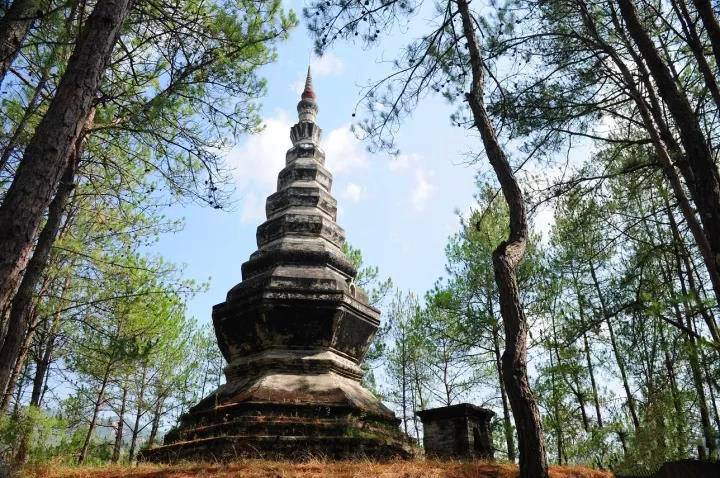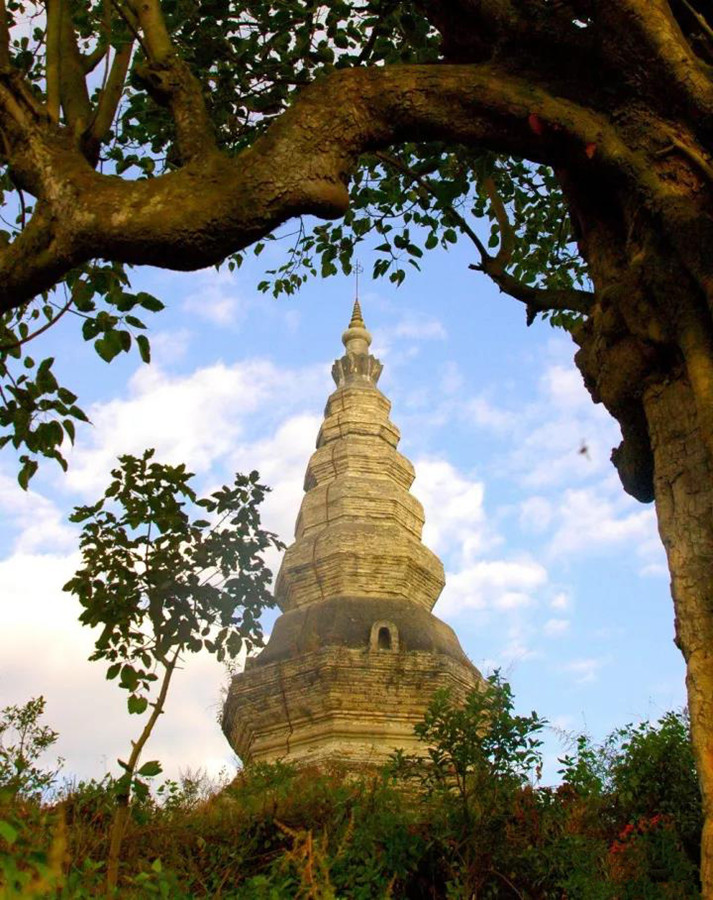Mengwang Pagoda in Linxiang District, Lincang
Overview
The Mengwang Pagoda (勐旺塔) and Xibei Pagoda (西北塔) are vital cultural and religious sites located in Linxiang District (临翔区), Lincang (临沧), Yunnan Province (云南省). Constructed in 1621, during the Tianqi period of the Ming Dynasty (明朝), these pagodas play an essential role in local Buddhist practices and serve as significant historical landmarks.
The Mengwang Pagoda is recognized as one of the earliest Theravada Buddhist pagodas in Yunnan, featuring a distinctive brick and stone structure shaped like an octagon. The Xibei Pagoda was built to address local feng shui concerns, making it one of the oldest pagodas of Southern Buddhism in the region, standing at about 15.7 meters high. Together, these structures symbolize the introduction of Theravada Buddhism to Lincang and represent high artistic and cultural values.
Historical Background
- 1621: Construction of the Mengwang Pagoda and Xibei Pagoda begins.
- 1982: Both pagodas are officially recognized during the first national cultural relics census.
- 1985-1989: Landslides prompt several repair efforts, including the construction of a dam for protection.
- 2007: Emergency restoration work is carried out to address structural issues.
- 2015-2018: A comprehensive restoration project is completed, reinforcing the pagodas and surrounding areas.
Architectural Features
Mengwang Pagoda
Commonly referred to as the White Pagoda (白塔), the Mengwang Pagoda stands approximately 16.6 meters tall, with nine tiers. Its base is constructed from stone slabs arranged in an octagonal pattern, with each side measuring 3.5 meters and a height of 2 meters. The pagoda features a smooth tapering design, ending in a spherical form.
Xibei Pagoda
Known as the Xibin Pagoda (西文笔塔), the Xibei Pagoda was constructed to address local feng shui concerns and is notable for its unique design. It consists of a base with a layered structure, also shaped like an octagon. The pagoda rises at an angle of approximately 75 degrees and includes niches on the fifth and seventh tiers, which remain empty of statues.
Cultural Significance
Local legends suggest that the mountain on which the Mengwang Pagoda stands resembles a toad, while the opposite mountain takes the form of a centipede. The story recounts how these two creatures were destined to battle, creating disturbances in the region. Ancestors built the Mengwang Pagoda to hold down the centipede, restoring peace.
During the Dai New Year, monks and followers gather at the pagoda for rituals, including offerings and ceremonies, enriching the cultural experience of the site.
Conservation Status
- 2003: The Yunnan Provincial Government designates the Mengwang Pagoda and Xibei Pagoda as provincial-level cultural relics.
- 2013: They are recognized as key national cultural relics by the State Council, highlighting their significance.
Location
The Mengwang Pagoda and Xibei Pagoda are located in Linxiang District, Lincang City, Yunnan Province, China (云南省临沧市临翔区).
How to Get There
By Car: Drive from the People’s Government of Linxiang District towards the Mengwang Pagoda and Xibei Pagoda, which is approximately 3.2 kilometers away and takes about 6 minutes.
Public Transportation: Check local bus schedules for routes that connect to Linxiang District.
Travel Tips
- Visit During Festivals: Experiencing local festivals, especially the Dai New Year, can provide deeper insights into local customs and traditions.
- Respect Cultural Practices: Be mindful of local customs, particularly during religious ceremonies, and seek permission before taking photos in sacred spaces.
- Bring Essentials: Due to limited facilities nearby, carry water and snacks for your comfort.
- Check Weather: Look up the weather forecast before your visit to ensure a pleasant experience.
- Explore Surroundings: Take time to explore the surrounding area, including local markets and eateries, to experience the regional culture fully.


















